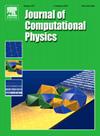Predicting transonic flowfields in non–homogeneous unstructured grids using autoencoder graph convolutional networks
IF 3.8
2区 物理与天体物理
Q2 COMPUTER SCIENCE, INTERDISCIPLINARY APPLICATIONS
引用次数: 0
Abstract
This paper addresses the challenges posed by non-homogeneous unstructured grids, which are commonly used in computational fluid dynamics. The prevalence of these grids in fluid dynamics scenarios has driven the exploration of innovative approaches for generating reduced-order models. Our approach leverages geometric deep learning, specifically through the use of an autoencoder architecture built on graph convolutional networks. This architecture enhances prediction accuracy by propagating information to distant nodes and emphasizing influential points. Key innovations include a dimensionality reduction module based on pressure-gradient values, fast connectivity reconstruction using Mahalanobis distance, optimization of the network architecture, and a physics-informed loss function based on aerodynamic coefficient. These advancements result in a more robust and accurate predictive model, achieving systematically lower errors compared to previous graph-based methods. The proposed methodology is validated through two distinct test cases—wing-only and wing-body configurations—demonstrating precise reconstruction of steady-state distributed quantities within a two-dimensional parametric space.
求助全文
约1分钟内获得全文
求助全文
来源期刊

Journal of Computational Physics
物理-计算机:跨学科应用
CiteScore
7.60
自引率
14.60%
发文量
763
审稿时长
5.8 months
期刊介绍:
Journal of Computational Physics thoroughly treats the computational aspects of physical problems, presenting techniques for the numerical solution of mathematical equations arising in all areas of physics. The journal seeks to emphasize methods that cross disciplinary boundaries.
The Journal of Computational Physics also publishes short notes of 4 pages or less (including figures, tables, and references but excluding title pages). Letters to the Editor commenting on articles already published in this Journal will also be considered. Neither notes nor letters should have an abstract.
 求助内容:
求助内容: 应助结果提醒方式:
应助结果提醒方式:


